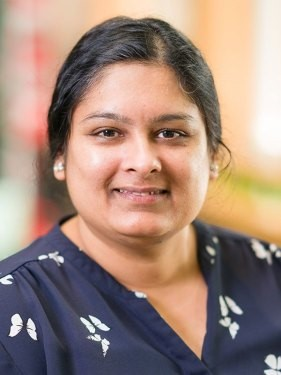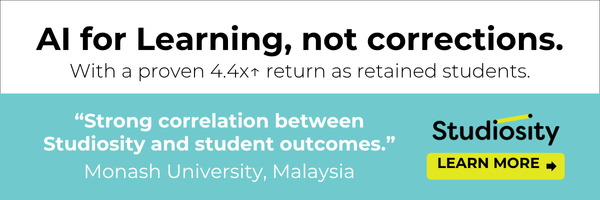Throughout the month, YFile will present a series of articles that highlight contributions from York University and its efforts to advance the SDGs. These stories reflect the people, research and initiatives that make the University an international leader in sustainability.
In a classroom that feels more like a think tank, students from York University are reimagining the future of sustainability.

Shital Desai
Developed by Shital Desai, a professor in York's Department of Design, the Life-centred Futures: Sustainability, Interaction Design and AI course brings together students from diverse disciplines - digital media, theatre, economics and design - to tackle some of the planet's most pressing challenges.
"Sustainability challenges are inherently complex," Desai says. "They can't be solved by looking at them through a single lens. This course teaches students to think systemically and collaboratively, integrating diverse perspectives to design solutions that are inclusive and regenerative."
The class begins with a deceptively simple task: students disassemble an everyday product - an Xbox gaming console controller, a vape pen or even a solar-powered garden light - and trace its lifecycle from raw material extraction to disposal.
Using doughnut economics, which balances human needs within ecological limits, and circular design, which emphasizes sustainable reuse, students analyze the product's environmental footprint and social impact.
One team specifically used doughnut economics to conduct a lifecycle analysis of an Xbox controller. They uncovered exploitative labour practices in mining and manufacturing hubs and identified significant environmental costs, such as habitat destruction and microplastic pollution.
"One surprising insight was the carbon footprint of online gaming servers," Desai explains. "It's easy to focus on the physical product, but digital systems have their own hidden environmental impacts."
The group proposed modular designs to extend the controller's lifespan and reduce waste. Their concept included repairable components and refillable batteries - an approach aligned with the "right to repair" movement, which advocates for consumers to have more options to repair their own electronic devices.
They also critiqued greenwashing practices - when companies misrepresent how environmentally friendly their products are - in the gaming industry, arguing that superficial sustainability initiatives often distract from systemic issues.
Another team used biomimicry to rethink food packaging inspired by natural ecosystems. They proposed biodegradable materials modelled on leaf structures and developed community-based recycling initiatives to close the loop on waste. "The students didn't just focus on materials," Desai says, "they considered human and non-human stakeholders - like farmers affected by deforestation or animals impacted by plastic pollution."
Emerging technologies such as augmented reality (AR)/virtual reality (VR) and artificial intelligence (AI) play a central role in many of these efforts. In one instance, students created an immersive VR environment that allowed users to "walk through" the lifecycle of a solar panel - from mining bauxite to e-waste disposal. The experience was designed to foster empathy for those affected by unsustainable practices while highlighting opportunities for intervention.
The course's interdisciplinary nature is both its greatest strength and its most demanding aspect, according to Desai. Students must learn not only to collaborate across fields but also to reconcile conflicting priorities. A student from economics might prioritize cost efficiency, while a theatre student focuses on empathy-building through storytelling. These tensions often lead to unexpected breakthroughs.
For example, one group combined performance art with data visualization to humanize sustainability challenges in gaming culture. Using role-playing scenarios, they explored how consumer behaviours could shift toward more sustainable practices when paired with real-time feedback on energy consumption and carbon footprints.
Desai, a faculty member in York's School of the Arts, Media, Performance & Design, drew inspiration for her work from her experiences teaching design and computational arts. She noticed gaps in traditional approaches to sustainability - particularly their failure to address digital systems' environmental impacts or include marginalized perspectives.
"Sustainability has often been narrowly defined," she says. "This course expands that definition to include accessibility, inclusivity and social equity."
To achieve this broader vision, Desai introduced the concept of "phygital" products - those with both physical and digital components - and encouraged students to evaluate their full lifecycle impacts. For instance, one group redesigned headphones using bio-based plastics and modular components while also developing an app to track energy consumption during use.
The emphasis on inclusivity is another key takeaway for students entering industries increasingly focused on social impact. By redefining sustainability as a pluriversal practice - one that considers humans, animals and ecosystems - students learn to create solutions that are equitable as well as environmentally sound.
"These students are showing us what's possible," Desai says. "When we break down silos and rethink sustainability, we're not just solving problems - we're creating new ways of thinking about the future."
This story was originally featured in YFile, York University's community newsletter.












